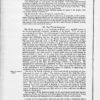
Matthew Jones, “On Nineteenth-Century Welsh Literacies, and the ‘Blue Book’ Education Reports of 1847”
This essay considers the 1847 Reports of the Commissioners of Inquiry into the State of Education in Wales, better known as the “Blue Books,” which alleged that Wales’s Welsh-speaking population was benighted, immoral, superstitious, and barbarous, and in need of English-language education. These factors were said to be compromising the country’s modernization while also, in more quiet ways, threatening British society more broadly. The Welsh language was the primary target, and it was deemed antiquated and unfit for commercial and imperial life. Through the Welsh language, the Blue Books also inveighed against Welsh motherhood, Wales’s increasing Nonconformity, and its recharged and growing literary culture. I place the Blue Books in a larger nineteenth-century Welsh context, focusing especially on how rising rates of literacy and religiosity across the country countered the Blue Books’ primary claims. I discuss with particular emphases the Welsh Calvinistic Methodist movement, the antiquarian movement, the revived eisteddfod literary festival, and the influences of Welsh women in Welsh society and as Welsh mothers. Furthermore, I argue that the Blue Books borrowed much colonialist rhetoric then in fashion that disparaged Irish, Indian, Chinese, and African people. With this in mind, the Blue Books fit in among contemporary colonial documents, and they construct the Welsh in similar manners to how other non-English populations were during this moment of Victorian Britain.
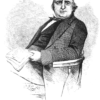
Janice Schroeder, “The Publishing History of Henry Mayhew’s London Labour and the London Poor”
Versions of Henry Mayhew’s massive social survey London Labour and the London Poor appeared in several publishing formats, including newspaper column, weekly serial, live stage show, and bound volume. This article traces the republication and remediation of London Labour alongside Mayhew’s repackaging of his interviews with London “street-folk” from 1849 onwards. I offer a succinct, accessible account of the complex publishing history of the text, from print newspaper column to digital edition.
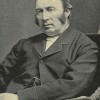
Kimberly J. Stern, “The Publication of John Pentland Mahaffy’s The Decay of Modern Preaching (1882)”
This contribution to BRANCH documents the historical and biographical conditions surrounding the publication of John Pentland Mahaffy’s controversial volume The Decay of Modern Preaching (1882). Although often deemed to be a secular or even heretical thinker, Mahaffy emerges here as a thoughtful scholar of religion standing at the crossroads of faith and reason. In the years preceding the publication of The Decay of Modern Preaching, Mahaffy witnessed a number of changes at Trinity College Dublin that threatened the principles he deemed essential both to good preaching and to intellectual culture more broadly. Mahaffy’s views on intellectual work and religion were mutually sustaining, a fact that helps to enrich our understanding of this important text, its troubled reception in the nineteenth century, and the evolving narrative of nineteenth-century faith.
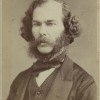
Scott C. Thompson, “On G. H. Lewes’s Problems of Life and Mind, 1874—79″
In Problems of Life and Mind (1874—79), George Henry Lewes posits his theory of “Scientific psychology,” which is founded on a synthesis between the objective study of the mind practiced in physiology and the subjective study of consciousness practiced in philosophy. Problems is an important text because it is one of the last quintessentially “Victorian” studies, a wide-ranging work produced before the full establishment of disciplinary boundaries. It combines a variety of discourses—including philosophy, physiology, psychology, evolutionary biology, and sociology—in order to establish a comprehensive methodology for the scientific study of consciousness. This entry positions Problems into its nineteenth-century psychological and philosophical tradition, as understood by Lewes; provides a summary of the overarching argument of Problems; and outlines the contributing sub-claims made in each of its discrete series.
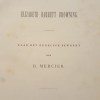
Karen Dieleman, “Aurora Leigh in the Netherlands, 1870-1900″
Elizabeth Barrett Browning’s 1857 verse-novel Aurora Leigh entered the cultural and social-political life of the Netherlands in the 1870s and 1880s through the work of three Dutch people: a literary critic, a social reformer, and a novelist. Conrad Busken Huet, the country’s leading literary and cultural critic, first brought the poem to Dutch attention in 1873 by showcasing it as a model of great art with high social and moral purpose, from which Dutch contemporary poetry could learn. Hélène Mercier, one of the leading social reformers of the country, then translated the poem into Dutch in 1883 to inspire the country’s social reform efforts. Its prophetic voice, Mercier declared, spoke as directly to the social conditions of the Netherlands in the 1880s as it had to those of England in the 1850s. Arguing that it was not necessary to retain Aurora Leigh’s poetic form for this voice to have effect, she translated the poem as prose. But Dutch novelist Martina van Walcheren did not agree. She produced a poetic translation in 1885 that her publisher supported at least in part because he opposed the emerging art-for-art’s sake movement. All these literary, social reformist, and aesthetic developments or debates were also fueled or complicated by national and international book economies and copyright questions.

Kristin Mahoney, “On the Ceylon National Review, 1906-1911″
The Ceylon National Review (1906-1911) was the official organ of the Ceylon Social Reform Society, an organization founded by the art historian Ananda Coomaraswamy in an effort to combat colonial influence and reinvigorate Ceylonese cultural production. Coomaraswamy also served as an editor at the Ceylon National Review. This essay focuses on the manner in which Coomaraswamy, in the essays he contributed to and solicited for the journal, fostered transethnic Ceylonese nationalism and anticolonial resistance as well as transnational engagement with British countercultural movements and radical thought. Paying particular attention to Coomaraswamy’s interest in socialist aestheticism, Theosophy, and British discourses concerning vegetarianism, I foreground the highly cosmopolitan inflection of Coomaraswamy’s brand of Ceylonese nationalism as expressed in the pages of the Ceylon National Review. In the essays he wrote and selected for publication in the periodical, Coomaraswamy integrated the discourses of anticolonialism and socialist aestheticism and allowed British and Ceylonese vegetarians and Theosophists to speak in relation to one another, engendering a rich and surprising form of Ceylonese nationalism inflected by late-Victorian radicalism.

Nathan K. Hensley and John Patrick James, “Soot Moth: Biston Betularia and the Victorian End of Nature”
The darkened form of the common peppered moth, biston betularia f. carbonaria, known colloquially as the “soot moth,” was virtually unknown in England prior to 1800. The first reliable field specimen was collected outside of Manchester in 1848, plucked from the heart of Victorian England’s rapidly expanding coal economy. With their black abdomen and wings, these darkened morphs contrasted starkly with what had once been the more frequent form: a white-bodied moth lightly speckled with black and brown. As scientific studies now show, the black morph appeared as a result of industrial manufacture, first around major production centers and later around London. This article traces those studies to argue that the emergence of this particular form of melanistic moth signals a sharp pivot in Britain’s environmental history: its appearance augurs a new fossil modernity, in which coal replaces wood and animal fats as the primary source of English energy, and as stored sunlight, archived as coal, takes center stage as the driver for an endless steam-powered project of worldmaking. Tracing studies of “industrial melanism” to its origins at the beginning of this extractive, fossil-fueled modernity helps us see the soot moth’s emergence as a watershed moment in the history of life and a new chapter in humankind’s relationship to the category of nature.
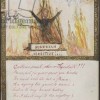
Shannon Draucker, “Hearing, Sensing, Feeling Sound: On Music and Physiology in Victorian England, 1857-1894”
This entry focuses on new developments in the burgeoning field of acoustical science that emerged in the mid-to-late-nineteenth century. During this time, sound science began to flourish in England, particularly through lectures by Hermann von Helmholtz and John Tyndall at the Royal Institution. The publications of Helmholtz’s Die Lehre von den Tonempfindungen als physiologische Grundlage für die Theorie der Musik (On the Sensations of Tone as a Physiological Basis for the Theory of Music) (1863, trans. 1875) and John Tyndall’s Sound (1867) also contributed to the transmission of acoustical theory mid-century. This entry traces the reception of these scientific ideas in musical, medical, educational, and literary circles in Victorian England. Focusing especially on new discoveries about sound’s capacity to incite physiological sensations, this essay argues that acoustical science fundamentally transformed the ways that Victorians conceptualized the relations between aesthetics and the body.
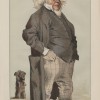
Peter H. Hoffenberg, “1871-1874: The South Kensington International Exhibitions”
The series of annual international exhibitions held during the early 1870s at South Kensington, London, were not particularly successful, or popular, but they were influential in the history of exhibitions. The alleged failures and the cancellation of the final annual exhibition halfway through the intended decade-long series of events provoked considerable discussion about the purpose, scale and expectations for exhibitions, which were no longer novel or limited to a particular city or nation-state. There were some successes, notably for the Australian colonies and British India, and for very specific trades and exhibitors, but the public discussion and those limited successes have generally failed to capture the attention of scholars. These events are rarely mentioned in books and articles about exhibitions and, when discussed, are considered to be failures without merit. This BRANCH contribution recognizes that other exhibitions were more popular and more successful, but also recognizes that the South Kensington shows were significant in addressing criticisms of exhibitions in general and in the generational history of both the shows and their organizers. The 1870s proved to be a pivotal period in the history of such exhibitions and the consideration of what merited public culture. The mantle was passed from Sir Henry Cole to his successors and the ambition of holding annual international exhibitions was replaced by more thematic shows in Britain and bold international shows in the Australian colonies. Amidst the general impressions of failure, there were also successes at the shows and those highlighted how inter-national exhibitions could prove useful in a changing world.

Jill R. Ehnenn, “On Art Objects and Women’s Words: Ekphrasis in Vernon Lee (1887), Graham R. Tomson (1889), and Michael Field (1892)”
Studies of women’s ekphrasis prior to modernism have, so far, tended to focus on individual women writers rather than attempt to identify trends that female authors from a particular time period might share. This essay intervenes in this gap in the scholarship by analyzing ekphrastic prose and poetry by Vernon Lee, Graham R. Tomson, and the co-authors who wrote as Michael Field. As female Aesthetes well-versed in art history and art criticism, as well as contemporary market practices, these nineteenth-century women writers anticipate today’s feminist theorists in the ways in which they were quite conscious of woman’s role as art object and the various functions of that role.
Here I examine Vernon Lee’s somewhat well-known novella Amour Dure (1887) as a foundational case study and then turn to two considerably lesser studied poems: Graham R. Tomson’s “A Silhouette” (1889) and Michael Field’s “Saint Katharine of Alexandria” (1892), for which I also identify the long-lost ekphrastic referent. These three texts all demonstrate how a specific form of aesthetic intertextuality—ekphrastic representational friction—operates as a powerful vehicle for early feminist criticism. In the examples I discuss, gendered critiques drive representational friction between the word, the visual medium, and its original referent—slippages that these art-savvy authors would have easily recognized and had opinions about in the work of others, and intentionally created and/or appropriated in their own work. Importantly, I also argue that a helpful way to think about ekphrastic writing by women writers associated with nineteenth-century British Aestheticism is to consider representational friction with particular regard to how their texts treat objects—seemingly unimportant objects—associated with their subjects.
